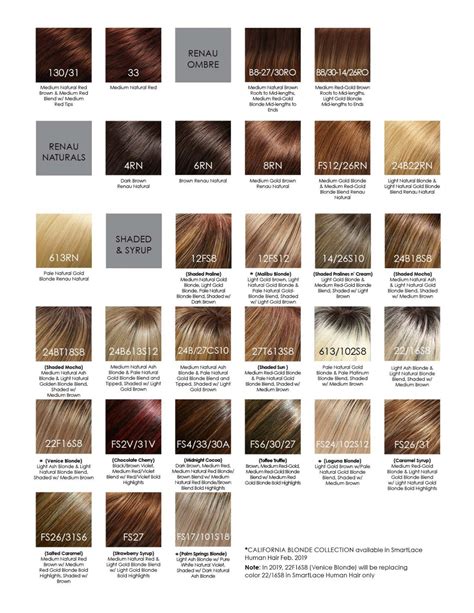Introduction
Human hair color is a captivating trait that has fascinated scientists, artists, and fashion enthusiasts for centuries. With its diverse range of hues, from raven black to platinum blonde, hair color plays a significant role in our appearance and self-expression. In this comprehensive article, we delve into the science, history, and cultural significance of human hair color, unveiling its captivating secrets and exploring its countless applications.

The Science of Hair Color
The color of our hair is determined by the presence of two types of melanin pigments: eumelanin and pheomelanin. Eumelanin produces brown and black pigments, while pheomelanin creates red and yellow pigments. The relative proportions of these pigments, along with the presence of air pockets in the hair shaft, give rise to the wide spectrum of hair colors.
Key Statistics:
- 90-95% of the world’s population has eumelanin-dominant hair (black, brown)
- 2-6% has pheomelanin-dominant hair (red)
- 1-2% has no melanin (white/gray)
History and Cultural Significance of Hair Color
Hair color has held cultural and symbolic significance throughout history:
Ancient Egypt: Black hair was associated with beauty and power, while blonde hair was seen as exotic.
Medieval Europe: Red hair was often associated with witchcraft or heresy, while golden hair was idealized in art and literature.
Victorian Era: Platinum blonde hair became fashionable, symbolized by the iconic Gibson Girl.
Modern Times: Hair color has become a form of self-expression and personal style, with countless shades and techniques available.
Hair Color Applications
Beyond its aesthetic value, hair color has various applications:
Cosmetology: Dyeing, bleaching, and highlighting can transform hair color to achieve desired styles and correct unwanted tones.
Forensics: Hair color can be used in forensic investigations to identify individuals or trace their origins.
Medical Diagnosis: Certain hair color patterns can be indicative of genetic disorders or medical conditions, such as albinism or vitiligo.
Table 1: Hair Color by Region
| Region | Black | Brown | Blonde | Red | White/Gray |
|---|---|---|---|---|---|
| Africa | 75-90% | 10-25% | <1% | <1% | <1% |
| Asia | 80-95% | 5-20% | <1% | <1% | <1% |
| Europe | 50-75% | 25-50% | 10-25% | 1-5% | 5-10% |
| North America | 50-75% | 25-50% | 10-25% | 1-5% | 5-10% |
| South America | 80-95% | 5-20% | <1% | <1% | <1% |
Table 2: Hair Color Trends
| Decade | Dominant Color | Popular Shades |
|---|---|---|
| 1950s | Jet black | Platinum blonde |
| 1960s | Brunette | Copper, auburn |
| 1970s | Blonde | Streaked, highlighted |
| 1980s | Neon colors | Punky, spiky styles |
| 1990s | Grunge | Black, brown, burgundy |
| 2000s | Platinum blonde | Balayage, ombré |
| 2010s | Natural shades | Brown, black, blonde |
| 2020s | Pastel colors | Lilac, lavender, pink |
Table 3: Hair Color and Genetics
| Gene | Allele | Hair Color |
|---|---|---|
| MC1R | C | Black |
| MC1R | T | Brown |
| MC1R | R | Red |
| SLC45A2 | A | Blonde |
| OCA2 | C | White/Gray |
Table 4: Hair Color and Health
| Condition | Hair Color |
|---|---|
| Albinism | White/Gray |
| Vitiligo | White patches |
| Polyosis | Premature graying |
| Canities | Age-related graying |
| Trichorrhexis nodosa | Brittle, fragile hair |
FAQs
Q: Why does my hair color change as I age?
A: Hair color can change with age due to a decrease in melanin production, resulting in graying or white hair.
Q: Can hair color be permanently changed?
A: Yes, hair color can be permanently changed through dyeing or bleaching processes. However, the results may fade over time.
Q: What is the rarest hair color?
A: Natural red hair is the rarest hair color, occurring in only 1-2% of the world’s population.
Q: Can hair color affect my health?
A: In certain cases, hair color can be a symptom of medical conditions, such as albinism or vitiligo.
Q: What are the benefits of hair coloring?
A: Hair coloring can enhance appearance, cover gray hair, and correct unwanted tones.
Q: What are the risks of hair coloring?
A: Hair coloring can damage hair if not done properly, leading to dryness, breakage, or scalp irritation.
Conclusion
Human hair color is a captivating aspect of our physical appearance, with a rich history, cultural significance, and countless applications. Understanding the science behind hair color, its genetic basis, and its potential health implications can empower us to make informed choices about our hair care routines. Whether you embrace your natural hair hue or seek to transform it, hair color remains an ever-evolving canvas for self-expression and creativity.
